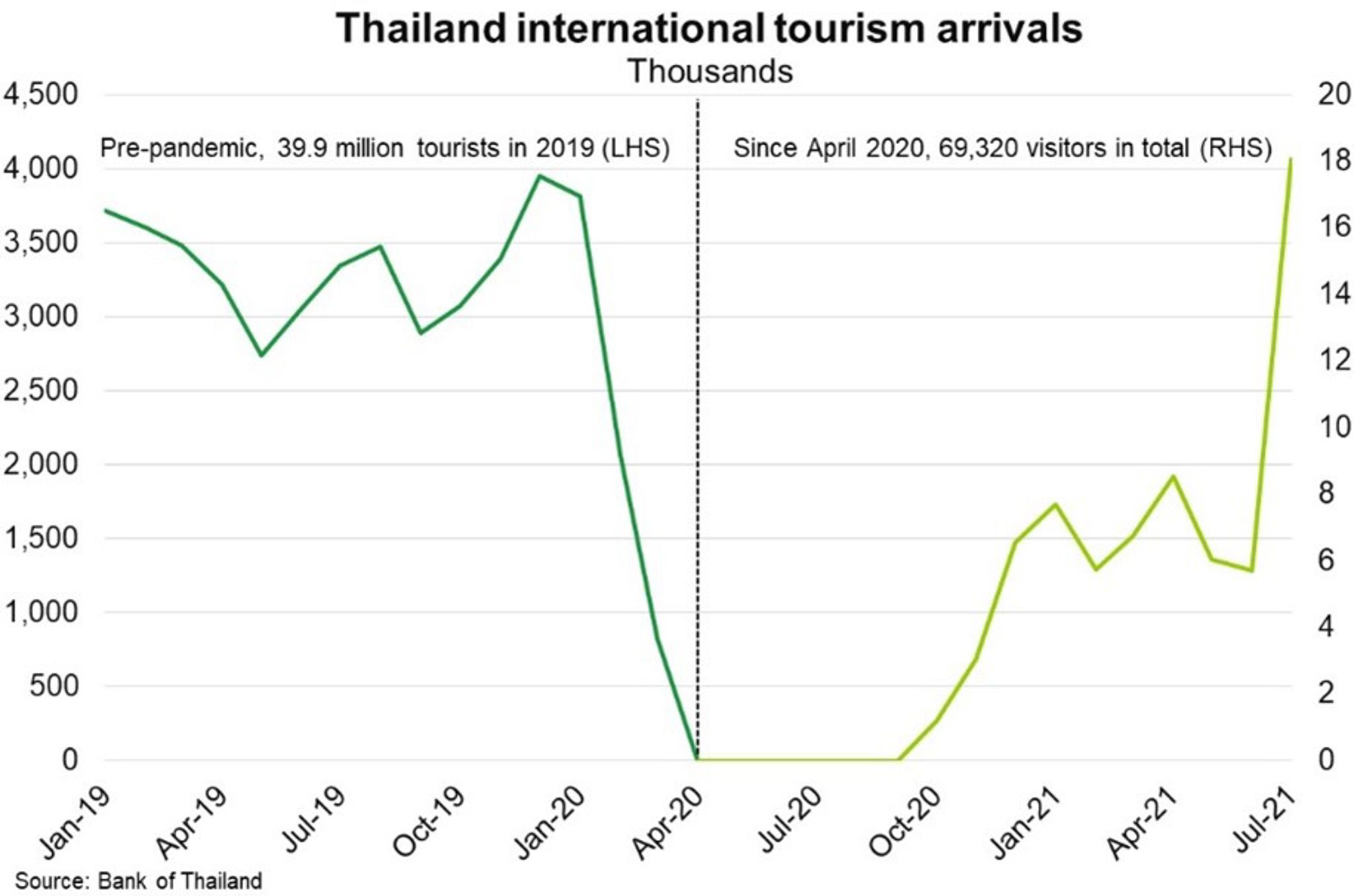The reopening of international travel for fully vaccinated visitors, planned for November, will support Thailand’s important tourism sector (20% of GDP), which has suffered a deep and prolonged COVID-19 induced downturn. Phuket reopened in July for fully vaccinated international visitors in a pilot phase of Thailand’s reopening plan. Known as the “sandbox” scheme, instead of undertaking a two-week hotel quarantine, tourists must stay within a certain area for seven days after arrival and take COVID-19 tests. There have been nearly 35,000 tourist arrivals in Phuket under the scheme since July. Still, tourism arrivals in Thailand remain a fraction of the almost 40 million international visitors in 2019 (Chart).
As economies reopen around the world, tourism and recreation services should recover strongly. Evidence from Europe and the US suggests spending bounces back relatively quickly if consumers have the income and opportunity to travel. Indeed, international and domestic travel demand showed significant momentum in July 2021 compared to June, if still down 53% compared to July 2019. Although this raises optimism for a Thai tourism recovery, the Delta variant continues to spread throughout Thailand and overseas. Some countries like the UK and the US have warned against travel to Thailand because of rising case numbers and low vaccination rates; only about 23% of the Thai population have received two COVID vaccine doses. As a result, tourism is likely to face a long, drawn-out recovery, until vaccination rises sharply in Thailand and key tourism markets.
Thailand is Australia’s 15th largest export market. As tourism, hospitality and the broader economy recovers, opportunities will exist for Australian exporters of food, fruit, vegetables and wine, in addition to traditional resources and energy exports.

